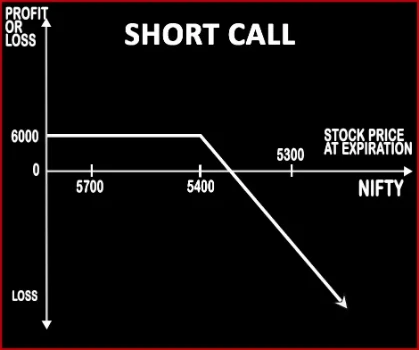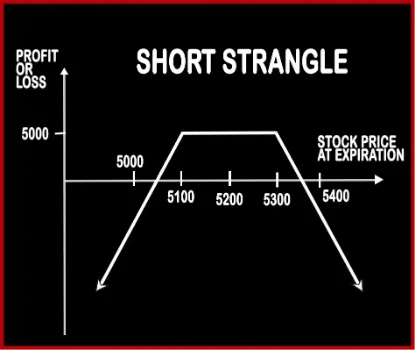Compare Strategies
| SHORT CALL | SHORT STRANGLE | |
|---|---|---|

|

|
|
| About Strategy |
Short Call Option StrategyA trader shorts or writes a Call Option when he feels that underlying stock price is likely to go down. Selling Call Option is a strategy preferred for experienced traders. However this strategy is very risky in nature. If the stock rallies on the upside, your risk becomes potentially unquantifiable and unlimited. If the strategy |
Short Strangle Option StrategyThis strategy is similar to Short Straddle; the only difference is of the strike prices at which the positions are built. Short Strangle involves selling of one OTM Call Option and selling of one OTM Put Option, of the same expiry date and same underlying asset. Here the probability of making profits is more as there is a spread between the two strike prices, and if .. |
SHORT CALL Vs SHORT STRANGLE - Details
| SHORT CALL | SHORT STRANGLE | |
|---|---|---|
| Market View | Bearish | Neutral |
| Type (CE/PE) | CE (Call Option) | CE (Call Option) + PE (Put Option) |
| Number Of Positions | 1 | 2 |
| Strategy Level | Advance | Advance |
| Reward Profile | Limited | Limited |
| Risk Profile | Unlimited | Unlimited |
| Breakeven Point | Strike Price of Short Call + Premium Received | Lower Break-even = Strike Price of Put - Net Premium, Upper Break-even = Strike Price of Call+ Net Premium |
SHORT CALL Vs SHORT STRANGLE - When & How to use ?
| SHORT CALL | SHORT STRANGLE | |
|---|---|---|
| Market View | Bearish | Neutral |
| When to use? | It is an aggressive strategy and involves huge risks. It should be used only in case where trader is certain about the bearish market view on the underlying. | This strategy is perfect in a neutral market scenario when the underlying is expected to be less volatile. |
| Action | Sell or Write Call Option | Sell OTM Call, Sell OTM Put |
| Breakeven Point | Strike Price of Short Call + Premium Received | Lower Break-even = Strike Price of Put - Net Premium, Upper Break-even = Strike Price of Call+ Net Premium |
SHORT CALL Vs SHORT STRANGLE - Risk & Reward
| SHORT CALL | SHORT STRANGLE | |
|---|---|---|
| Maximum Profit Scenario | Max Profit = Premium Received | Maximum Profit = Net Premium Received |
| Maximum Loss Scenario | Loss Occurs When Price of Underlying > Strike Price of Short Call + Premium Received | Loss = Price of Underlying - Strike Price of Short Call - Net Premium Received |
| Risk | Unlimited | Unlimited |
| Reward | Limited | Limited |
SHORT CALL Vs SHORT STRANGLE - Strategy Pros & Cons
| SHORT CALL | SHORT STRANGLE | |
|---|---|---|
| Similar Strategies | Covered Put, Covered Calls | Short Straddle, Long Strangle |
| Disadvantage | • Unlimited risk to the upside underlying stocks. • Potential loss more than the premium collected. | • Unlimited loss is associated with this strategy, not recommended for beginners. • Limited reward amount. |
| Advantages | • With the help of this strategy, traders can book profit from falling prices in the underlying asset. • Less investment, more profit. • Traders can book profit when underlying stock price fall, move sideways or rise by a small amount. | • Higher chance of profitability due to selling of OTM options. • Advantage from double time decay and a contraction in volatility. • Traders can book profit when underlying asset stays within a tight trading range. |